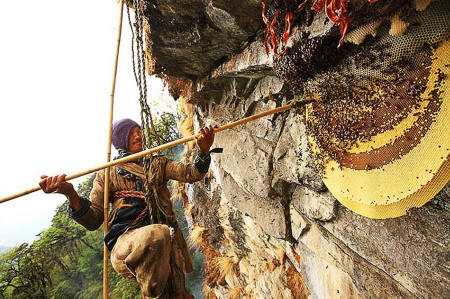|
by Christina Sarich
This honey is so precious it is called
'mad honey' for its interesting properties, coveted the world over.
The bee has had little alteration to its
genes since its habitat is largely undisturbed in the Himalayan
Mountains.
Many Rhododendron species contain
grayanotoxins, which is why they
are widely known to be poisonous to humans, but the honey made from
the same flower has some pretty potent effects on the average Joe or
Jane.
The honey is thought to be effective in
treating everything from hypertension and diabetes to poor sexual
performance, when taken in small doses. In large doses; however, it
can be highly toxic and even fatal. There are legends of yogis
living in the area that were like medicine men who could administer
the right does to humans seeking the flower's more desirable
qualities without killing themselves by eating the honey.
With slightly larger amounts, it can be
hallucinogenic, although there is little scientific literature
regarding it's effects. When taken in larger doses, however, mad
honey can cause Rhododendron poisoning (or honey intoxication) which
is characterized by vomiting, progressive muscle weakening and heart
irregularities.
Though it can be medicinal, and fetch a high price,
locals still barely make a profit after the efforts they go to
obtain it:
|


